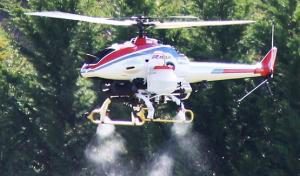With the assistance of drones, a Washington State professor is cultivating a brand new pressure of analysis within the discipline of precision agriculture.
Lav Khot, a professor on the college’s Center for Precision and Automated Agricultural Systems, is utilizing rotor drones arrayed with thermal-imaging sensors to discover crops response to varied irrigation methods. He particularly performs analysis amongst crops well-known throughout Washington similar to apples and cherries, along with wheat, potatoes and pinto beans.
Data captured by Khot’s drones can measure crop energy and stress to find out if mid or low elevation sprinklers work greatest for every crop. In his analysis on pinto bean crops, Khot hopes to scale back “the irrigation level from the normal 100 percent to 50 percent to see which ones will survive the stress and which will not, and which will do better,” he mentioned in an interview with AgProfessional News. “We’re also looking at how tillage and no-tillage affect the pinto beans with the different levels of irrigation.”
By offering precision agricultural knowledge to regional farmers, Khot hopes to help them with optimum decision-making on the subject of planting for spring or winter. By analyzing plant well being, farmers can see any injury sustained from chilly spells. “Then they can decide if they want to continue, or maybe plant some spring wheat instead,” Khot mentioned.
Khot sees drone use as an efficient cost-cutting measure as nicely. Cherry farmers in Washington presently rent helicopter surveys at costs as much as $20,000 to examine fruit bushes.
Drone missions within the agriculture sector have blossomed over the previous 5 years and the outlook forecasts a bumper crop. A latest examine concluded the precision agriculture drone market shall be value $2.9 billion by 2021 – up 28 p.c from a 2015 valuation of $673 million.
Commercial drone supplier AeroVironment not too long ago launched a year-long examine with Fresno State University’s College of Agricultural Sciences and Technology to survey and analyze water-stress ranges in California almond bushes utilizing drone imagery and cloud analytics. And in January, researchers at Kansas State University created a analysis program to research in-field circumstances and enhance wheat-breeding packages.
 Unmanned Aerial Vehicle The latest drone news
Unmanned Aerial Vehicle The latest drone news




